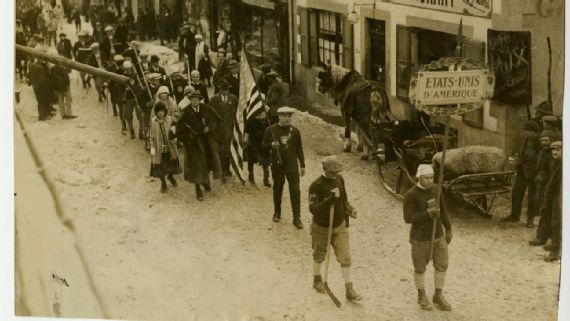Since 1976, the LSSU Lakers hockey team has called The Taffy Abel Arena home. The 4,000 seat arena is also used for hosting youth hockey games and practices, LSSU classes, community events, graduation and summer camps. While everyone knows the arenas name, not many know the man it is named in honor of.
Clarence “Taffy” Abel was born on May 28, 1900, in Sault Ste. Marie, Michigan USA as a Sault Chippewa Indian. He along with his mother and sister are listed as Chippewa per US Government 1908 Durant Census Rolls. He received the nickname “Taffy” because he would sneak taffy into school.
Following his high school years, he joined the United States National Hockey Team for the first Winter Olympics in 1924. There he became the first Native American to participate in the winter games. He was recognized by his fellow athletes for his patriotism and leadership, helping him become captain of his team and the first person to represent the United States at the Winter Olympics by carrying the American flag during the opening ceremonies.
Taffy and the U.S. National Hockey Team led a successful tournament run that landed them a silver medal at the conclusion of the Olympics. Following his time with amateur USA Hockey in the 1924 Winter Olympics, Taffy went on to lead a successful professional career. After playing for the St. Paul Hockey Club for three seasons in the USAHA, he moved to the Minneapolis Millers where he helped win the CHL title in 1926.
Following that title victory, Taffy was recruited by legendary NHL owner, Conn Smythe, to play on the NHL New York Rangers and then later with the NHL Chicago Blackhawks. In the NHL he became the first American and the first Native American to become a regular NHL player in a sport that had up until then been overwhelmingly played by Canadian NHL players. During his eight-year NHL career, Taffy went on to win two Stanley Cups and is thought of by many Hockey Historians as one the best ever defenseman in the NHL.
At the conclusion of his career, he played a total of 16 seasons of amateur and professional hockey, received an Olympic silver medal, won two Stanley Cups, and played a total of 333 games in the NHL.
Following his retirement, he returned to his native Michigan and coached ice hockey for the Soo Indians of the Northern Michigan Hockey League (or NMHL) and opened up a tourist hotel and superclub called Taffy Lodge which he managed for several years. He passed away in Sault Sainte Marie, Michigan, at the age of 64. He was posthumously inducted into the United States Hall of Fame as a Player in 1973.
In 1990, Lake Superior State University (LSSU) in Sault St Marie Michigan took early steps to name its ice new arena “Taffy Abel Arena”. The Sault Chippewa Tribe donated money for construction and naming rights. Abel’s most recent honor came in 2012, when he was featured in an exhibition celebrating Native Olympians at the Smithsonian Institution’s National Museum of the American Indian. (2012).
In 2022, we celebrate Taffy Abel’s Centennial Anniversary as the first Native American in the Winter Olympics. February 4, 2022 has been declared Taffy Abel Day by a US Congressional Resolution.
